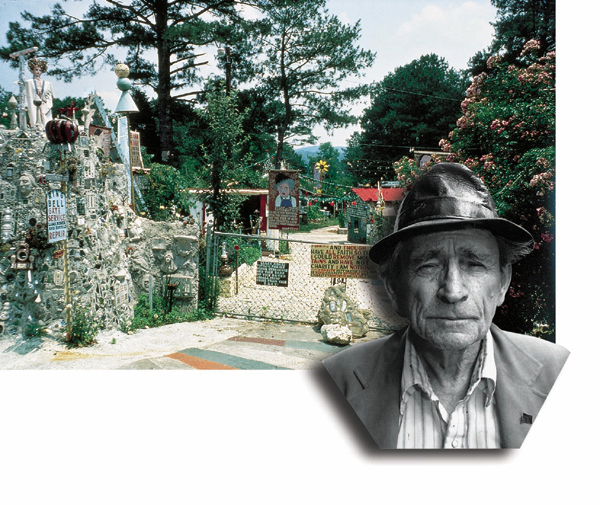Image Details

© Howard Finster/Photo, James Pierce/From John Beardsley, Gardens of Revelation (New York: Abbeville Press, 1995) and Mary Ellen Mark/From Robert Peacock and Annibel Jenkin, Paradise Garden (San Francisco: Chronicle Books, 1996)
Finster in paradise. Claiming he was “commissioned by God,” Finster converted two acres of former swampland around his home in Summerville, Georgia, into Paradise Garden—a walk-through Bible designed to encourage people to believe in Jesus. To make Paradise, Finster wrote, he “took the pieces, you/threw away, and put them/togather [sic], by night, and day,/washed by rain, dried by sun/a million pieces, all in one,” creating a maze of cement walkways, glass and wooden buildings, and an incredible array of found, donated and created objects. Some of the garden’s “million pieces” include an occupied Civil War coffin; Finster’s bicycle repair tools; a boy’s tonsils (in a jar); a giant Coke bottle; marbles; mirrors; tiles; glass; numerous signs quoting scripture and admonishing people to, among other things, “Get Right With God”; various cutouts of angels and of famous figures—Elvis Presley, Henry Ford, Marilyn Monroe—shown at different ages; a hodgepodge of sculptures; and many detailed paintings.
“My garden is a way for me to get my messages out all over the world,” Finster explains in a recently published book by John Beardsley called Paradise Garden, “And that’s my responsibility. Someday, sometime, people on this planet are going to realize that they need what Howard Finster’s got, whether it’s religion, whether it’s art, or whether it’s building a garden.”
